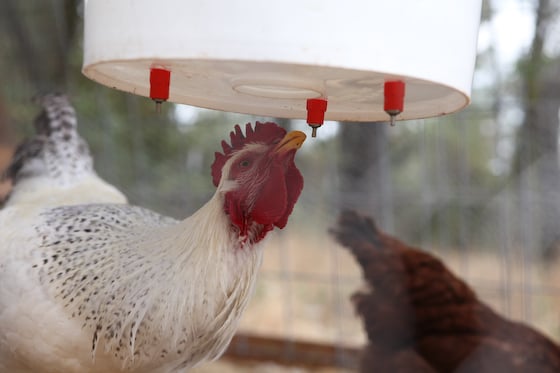Your coop photo in post #6 did not come through for me.
I don't use nipple waterers but I'd think you'd need really clean water to keep from plugging the nipples. That's going to take more sophistication in your system than I have experience with so I won't be much help. I don't think you need much water pressure for those nipples.
I forgot something in my earlier post. You need some type of overflow so hydraulic pressure does not build up too high and burst your tank or somewhere else in the system.
Getting water that clean has kind of got me stuck. I would not use a steel tank that can rust but would use a plastic one. I could see a downspout putting water onto a tight screen at the top of the tank, the tight screen to keep trash and mosquitoes out. That corrugated roof sounds pretty good but I think I'd like a diverter so I could spill the first of the rainwater outside your system to keep dirt and dust out of the system.
I don't know how you would handle algae. Chlorine bleach is a standard method but you need to control concentration. A lot of us drink water sanitized by chlorine but the amounts used are very small.
I would want my water feed from the tank to be up off of the bottom a bit so sediment doesn't go down your system. You would need a way to clean sediment out of the bottom when it starts to build up. For the same reason I think I'd want horizontal nipples, not vertical nipples. With an open system like that I think you will have sediment no matter what you do unless you invest some big money. You can buy rainwater collections systems but they get expensive.
Hopefully someone that has experience with rainwater collection and nipples will see this and help but I'd be nervous with that combination.


